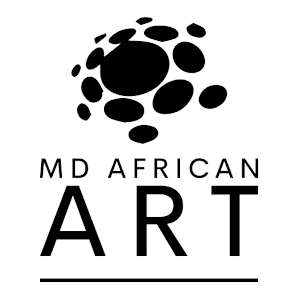The Complex Journey of African Art: Pathways Back to Africa
The realm of art is not merely a domain of aesthetic pleasure but a significant repository of cultural heritage and historical narratives. This is particularly true for African art, which embodies the rich, diverse traditions and histories of the continent. However, a considerable portion of this heritage lies not in Africa but in European museums, particularly in French and British institutions. The journey of these artworks from their native lands to European museums and the ongoing efforts to have them returned highlight a complex narrative of colonialism, cultural appropriation, and the struggle for restitution.
Historical Context: Colonialism and the Acquisition of African Art
The presence of African art in European museums can be traced back to the era of colonialism. During the late 19th and early 20th centuries, European powers, notably France and Britain, expanded their empires into Africa. This period saw the extensive acquisition of African cultural artifacts, often through dubious means. Military expeditions, such as the British Punitive Expedition to Benin in 1897, resulted in the looting of thousands of precious artifacts, including the famous Benin Bronzes. Similarly, French colonial campaigns brought significant numbers of African artworks to Europe.
These artworks, which were initially viewed as curiosities, gradually gained recognition for their artistic and cultural value. They became central exhibits in prestigious institutions like the British Museum, the Victoria and Albert Museum, and the Musée du quai Branly-Jacques Chirac in Paris. However, the manner in which these artifacts were acquired has been a subject of intense debate and criticism.
The Ethical and Moral Dilemmas
The retention of African art in European museums raises profound ethical and moral questions. These artifacts are not merely objects of art but are deeply embedded in the cultural and spiritual lives of the communities that created them. Their removal from Africa has deprived these communities of significant aspects of their heritage and identity.
One of the primary ethical dilemmas is the issue of consent. Many of these artworks were taken without the consent of the local populations. In numerous instances, they were seized as spoils of war or acquired through coercive treaties. This lack of consent complicates the legitimacy of European claims to these artifacts.
The Restitution Movement
In recent years, there has been a growing movement advocating for the restitution of African art to its countries of origin. This movement is driven by both African nations and global advocates for cultural justice. The call for restitution is not merely a demand for the return of artifacts but a broader appeal for historical redress and the restoration of cultural dignity.
The French and British Responses
The responses of French and British institutions to restitution demands have been varied and complex. In 2017, French President Emmanuel Macron made a groundbreaking speech in Burkina Faso, declaring that African heritage should no longer be held hostage in European museums. This was followed by the commissioning of a report by scholars Bénédicte Savoy and Felwine Sarr, which recommended the restitution of African artifacts. The report has sparked considerable debate and led to some notable restitutions, such as the return of 26 royal statues to Benin in 2021.
However, the implementation of these recommendations has been slow and met with resistance. Many French museums have expressed concerns about the practicalities of restitution, including issues of legal ownership, the readiness of African museums to care for these artifacts, and the potential loss of cultural patrimony for French citizens.
In Britain, the situation is similarly contentious. The British Museum, home to a significant collection of African art, has been particularly resistant to restitution claims. The museum argues that its collections are held in trust for humanity and that they play a crucial role in educating the global public about diverse cultures. However, critics argue that this perspective fails to acknowledge the historical injustices associated with the acquisition of these artifacts.
Despite institutional resistance, there have been some positive developments. For instance, in 2021, the University of Aberdeen returned a Benin Bronze to Nigeria, and the Horniman Museum in London announced plans to return six artifacts to the Nigerian government. These actions, while limited in scope, represent significant steps towards addressing historical wrongs.
The Challenges of Restitution
The process of restitution is fraught with challenges. Legal issues are a significant barrier, as many European museums are bound by national laws that prevent the deaccessioning of their collections. This is the case with the British Museum, where the British Museum Act of 1963 restricts the removal of items from its collection.
Another challenge is the question of whether African museums have the necessary resources and infrastructure to properly care for and display the returned artifacts. Decades of underfunding and neglect have left many African cultural institutions ill-equipped to handle significant influxes of returned objects. However, proponents of restitution argue that this should not be used as an excuse to delay returns but rather as a call to support the development of cultural infrastructure in Africa.
The Way Forward
The journey towards restitution is undoubtedly complex, but it is a necessary step towards justice and cultural restoration. It requires a collaborative approach that involves not only the return of artifacts but also the provision of support for African cultural institutions. This includes funding for museum infrastructure, training for conservation professionals, and the establishment of legal frameworks that facilitate restitution.
Furthermore, the conversation around restitution should be broadened to include the voices of the communities from which these artifacts originate. These communities should play a central role in determining the fate of their cultural heritage.
The difficulties of finding African art in European museums and the challenge of returning it to former colonies reflect broader issues of historical injustice and cultural appropriation. While progress has been made, much work remains to be done. The ultimate goal should be the restoration of cultural heritage to its rightful owners and the recognition of the intrinsic value of these artifacts to the communities that created them.

